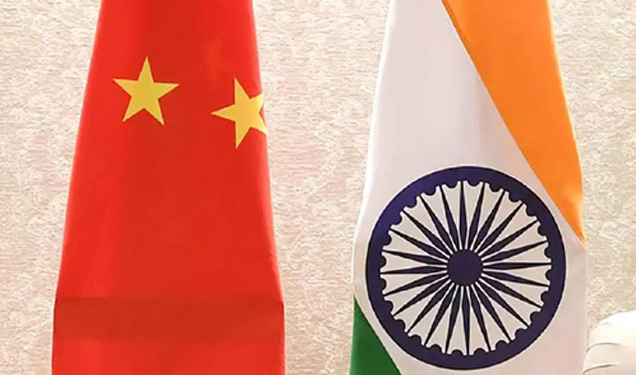In a strategic move, China held out an olive branch to India on 7 March underscoring the need to stop undercutting each other and shedding mutual suspicion. It also wants enabling conditions to be created by expanding bilateral cooperation to resolve the border issue. All that sounds well and good but, there is more to it than meets the eye. The new overtures made by China’s State Councillor and Foreign Minister Wang Yi at a press briefing reflects new strategising not due to any reappraisal of India’s might, but to diplomatically circumvent the renewed initiative of the Quad group to close ranks and take on China unitedly. Significantly, Wang made the remarks only a few days before the first ever meeting of the leaders of the Quad grouping on March 12. This is a clear signal to New Delhi which is preparing to join the Quad meeting between Prime Minister Narendra Modi, US President Joe Biden, Japan PM Yoshihide Suga and Australian PM Scott Morrison.
Beijing views the Quad with suspicion. Three years ago Wang was dismissive of its revival which he described with the pejorative expression of “a headline-grabbing idea” comparing it with “foam on the sea”. He even predicted it would “soon dissipate”. However, three years are a long period in diplomatic manoeuvrings. Since then big events took place, including the protracted standoff along the Line of Actual Control, a clash in Galwan and the first de-escalation last month plus the joint naval exercises by the Quad navies.
In an attempt to buy peace with India, Wang harped on its age-old tactical line that the boundary dispute was an issue left from history and not the whole story of the China-India relationship. He insisted both the countries were friends and partners who should shed mutual suspicion. With India showing keen interest in Quad grouping, China is now singing a new tune that the boundary situation should not be placed at the centre of the relationship but at a proper place in overall ties. This is an invitation to India to return to business as usual even as they deal with the border issue. Nothing could be more conciliatory than Wang’s assertion that the world expects both China and India to safeguard the common interests of developing countries and advance multi-polarity in the world. His very words “China and India are each other’s friends and partners, not threats or rivals” could sound like music to the ears of the foreign service establishment of India.
China also wants to treat the Ladakh standoff as a thing of the past and move on. This is because China seems to be realising India is being pushed to embrace the USA as a strategic partner for its aggressive geo-political strategies centring around its Belt and Road Initiative (BRI). The least it wants to see is increased US involvement in the India-Pacific region in collaboration with India. The decision to include Australia in the Malabar 2020 Naval exercise after a gap of 13 years following the second ministerial meeting of the Quad in Tokyo on October 6, 2020 caused further anxieties to China.
The threat posed by China to geo-strategic scenario of the Indo-Pacific region represents a great challenge to the Quad countries in terms of disruptions of cooperation in maritime security, cyber-security, data flow, quality infrastructure and healthcare.
In Beijing’s perception the Indo-Pacific is a direct threat to the BRI and China’s strategy of encircling India. During his recent visit to Malaysia, Wang lashed out at the Quad, stating that Washington was aiming to build an “Indo-Pacific NATO” through the Quad. This is a proof that China no longer dismisses Quad as “foam on the sea” that would “soon dissipate”.
India’s pull-out from the Regional Comprehensive Economic Partnership (RCEP) negotiations last year has put it in a disadvantageous position. But, the China-centric supply chains suffered after India, Japan and Australia launched the Resilient Supply Chain Initiative (RSCI) focused on key sectors such as semi-conductors, pharmaceuticals, automobiles and telecommunications.
Viewed in this backdrop, China’s peace offer should definitely be taken with tons of salt. Chinese sweet talk is but a trap to wean India away from its strategic partners and make its global economic domination dream a reality. The moot point, however, is whether Indian diplomacy has the guts and resilience to withhold the Chinese onslaught that is bound to commence after this sweet nothing talk. Second, India has also to take care not to be seen to be extremely dependent on borrowed strength from other Quad countries.






































